
| Tower Casemoth (previously known as Tinea arctiella) PSYCHIDAE, TINEOIDEA | (donherbisonevans@yahoo.com) and Stella Crossley |
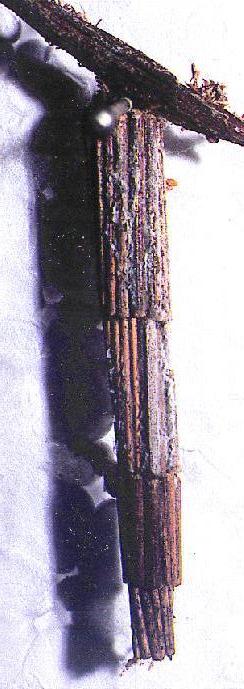
(Specimen: courtesy of the
The Australian Museum)

| Tower Casemoth (previously known as Tinea arctiella) PSYCHIDAE, TINEOIDEA | (donherbisonevans@yahoo.com) and Stella Crossley |

(Specimen: courtesy of the
The Australian Museum)
This Caterpillar attaches sticks all around its case, all of the same length, and attaches them parallel to the axis of the case. When the caterpillar grows sufficiently long, it attaches a new set similarly arranged to the old set, except that more are attached so that the radius of the new part of the case is bigger. The caterpillar does this several times as it grows, giving a tiered appearance to the case. The case can grow to a length of up to 3 cms.
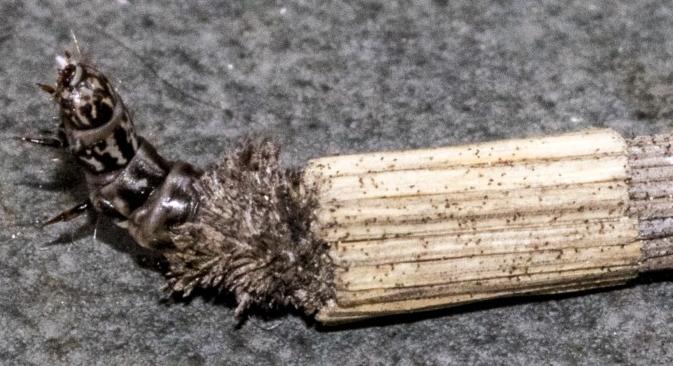
The caterpillar has been found feeding on plants in the families :
and in particular: flowers of
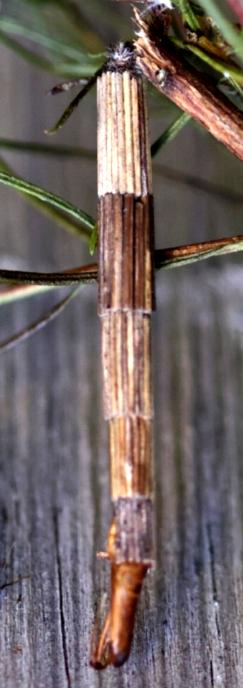
The caterpillar pupates in its case. When a male adult is ready to emerge, he pushes the pupa out of the back end of the case.
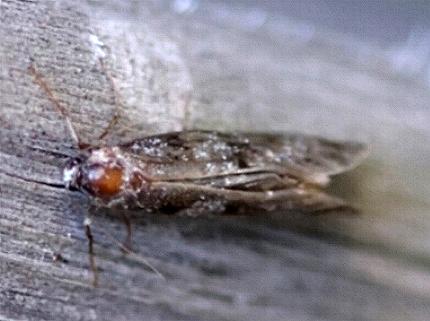

The adult male moth has dark grey wings with variable off-white patches. His wingspan is about 2 cms.
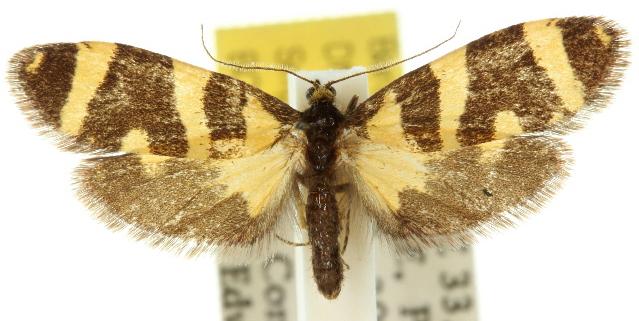
The adult female is wingless. She is off-white with a brown head, thorax, and tip to the abdomen. She stays within the case. The male has to extend his sex organs through the rear hole in her case to fertilise her.
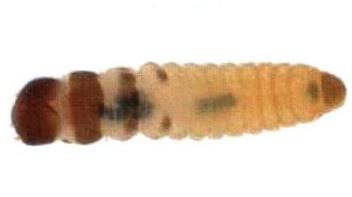
The species has been found in
Note that other PSYCHIDAE species besides Lepidoscia arctiella have larvae that build cases like this.
Further reading :
Ian F.B. Common,
Moths of Australia,
Melbourne University Press, 1990, pl. 3.14, p. 179.
Francis Walker,
Characters of undescribed Lepidoptera Heterocera,
E.W. Janson, London, 1869, p. 84, No. 43.
 caterpillar |  butterflies |  Lepidoptera |  moths |  caterpillar |
(updated 29 November 2009, 12 November 2025)